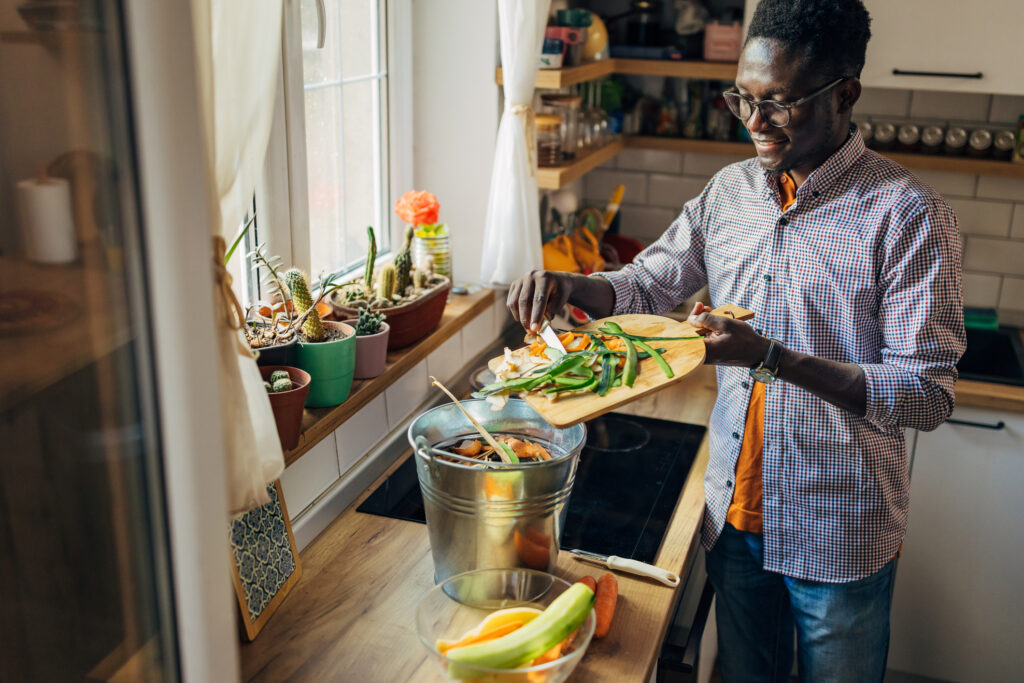Composting to Fight Food Pollution: More on Environmental Impacts and Tips to Help – Blavity
The United States has a growing and underdiagnosed food waste problem. In 2021, according to the non-profit organization ReFED, 91 million tons of food – half of which is still eaten – were thrown away. Only 2% was given while food shortages are widespread in poor communities across the country.
The problem of food waste is so serious that in 2015, the United States Environmental Protection Agency (EPA) announced its plan to cut waste and food loss in half by 2030. However, the breakdown of food per person is increasing.
Reflecting awareness of the problem, in June 2024, the Biden Administration launched the National Plan to Reduce Food Loss and Waste and Recycle Organics. “Every year, too much food produced in the United States ends up in landfills instead of dining room tables. This harms our economy by raising food prices and contributing to climate pollution,” says EPA Administrator Michael S. Regan.
One of the strategies proposed in the National Policy is composting to combat food waste.

Environmental Effects of Food Waste
In the United States, food waste is the single largest component of waste, accounting for 30-40% of all food and about a quarter of all garbage. The US leads the world in food loss and wastage, with a fifth lost on the farm.
Embedded in food waste is a large amount of fresh water used to produce and transport it from farm to table. About 21-33% of the blue (irrigation) water used on US farms is wasted in this way each year, equal to 5.9 trillion gallons.
U.S. food waste and waste produce about 170 million tons of carbon dioxide equivalent (CO2e) annual emissions from burning the fuels used to grow, harvest, process and transport them. Globally, about 8% of all human-caused emissions are linked to food waste and waste.
In addition, when decaying food leaves the soil, it produces more methane, a more powerful climate-causing gas than carbon dioxide. In fact, the EPA calculated that for every 1,000 tons of food waste, about 34 tons of methane is produced. That equates to 58% of all methane from landfills.
Food Insecurity and Food Waste
The largest rate of food waste in the United States exists in a country where a large portion of the population endures chronic food insecurity, defined as a lack of access to affordable, nutritious food. The EPA estimates that this junk food contains enough calories to feed 150 million people each year.
According to the Food Research & Action Center, one in eight households (12.8 percent), which includes about 44.2 million Americans, is food insecure. More than one in six families with children (17.3 percent) are food insecure, marking a 40% increase compared to 2021. Those disproportionately affected by food insecurity are families a Black (22.4%) and Latinx (20.8%), more than double the rate of whites. non-Latinx households (9.3%) are food insecure.
The nonprofit Feeding America offers an interactive map of food insecurity. The Group’s interactive dashboard examines the relationship between racism and food insecurity.
Food Waste Laws in the United States
So far, there are only waste and food loss regulations in a few states and municipalities. California, Connecticut, Massachusetts, New York and Rhode Island have laws that limit the amount of food waste sent to landfills.
In 2012, Vermont passed the Universal Recycling Act that completely bans food waste from landfills beginning in 2019. As a result of this legislative action, the Vermont Foodbank reports that food donations have nearly tripled in the state by width.
States considering programs to support private composting and composting programs to divert food waste from landfills include California, Colorado and Massachusetts.
Complementing the national plan to deal with waste and losses mentioned above are two EPA programs funded by the Bipartisan Infrastructure Law: Solid Waste Infrastructure for Recycling Program and Recycling Education and Outreach grants. These programs promote the President’s Action for Justice40 which is intended to help disadvantaged communities. More than $83 million of this funding supports 72 projects involving the recycling of organic materials and compost, which are needed to reduce climate impacts.
Compost to Fight Food Waste
If your county or municipality offers food shelters or drop-off sites that can turn food waste into energy or compost, there are several compost storage facilities available for your kitchen counter or refrigerator.

If you have the space and motivation, you can compost your food in a compost tumbler on your patio or in a backyard pile (enclosed or not).
What is Composting?
Composting is the decomposition of organic matter such as grass clippings, leaves and food scraps by microorganisms in the presence of oxygen (aerobic). This process recycles food waste into fertile soil to add to the garden, even from containers or windowsills.
Vermicomposting (with worms) is another form of composting that you can make at home in a multi-tray box available at garden stores. It is an integrated, hygienic process that produces worms that make great soil changes. All organisms avoid methane production.
Based on my gardening experience, I have found the best compost is created when the compost materials are:
- In a ratio of 2:1 – twice as much brown material (dry leaves, wood chips, etc.) as green material (food waste, pieces of grass, etc.).
- Chop or cut into small pieces
- Kept moist (not too wet)
- Aerated by turning the pile (3 ft. max) every week or so
- At 131-160℉ (internal temperature) for several days before changing
Depending on the season and environmental conditions, it can take one month or up to a year to create the dark, earthy, decaying soil known as manure that results from this process. .
Home Composting Tips
To ensure the best composting success at home, here are some tips:
- Allowed food scraps include: vegetable and fruit skins, skins, ends, pits, rinds, etc., coffee grounds, used tea leaves in organic bags (not plastic), filter paper, eggshells.
- Avoid oil, milk, meat and bones
- Bury the green stuff below the brown stuff in your pile to avoid fruit flies
- A strong, sour smell means that the compost has not yet fully cured, so wait until you add it to the garden or flower pots.
- A bin placed outside will keep mice at bay but can run the risk of drying out, so watering is important.
#Composting #Fight #Food #Pollution #Environmental #Impacts #Tips #Blavity
